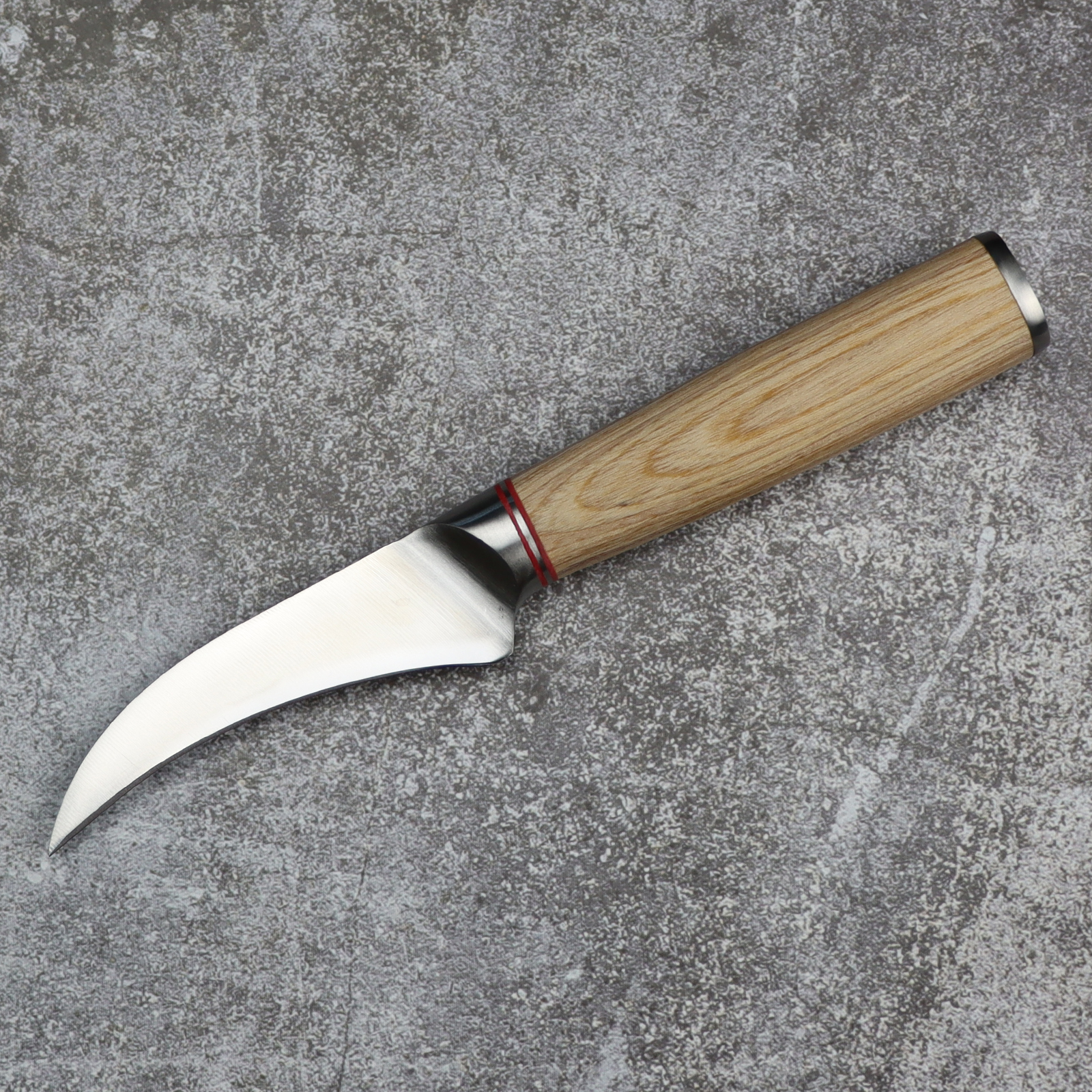9 Types of Kitchen Knives and Their Uses
Aug 05,2022 | Fzkaly
Make clear types of kitchen knives and their uses will make your life easier. This will help you prevent injuries and save yourself time and effort in the kitchen. The Kitchen knife is to chefs what a brush collection is to a painter. Use them correctly to achieve the results you’re looking for.
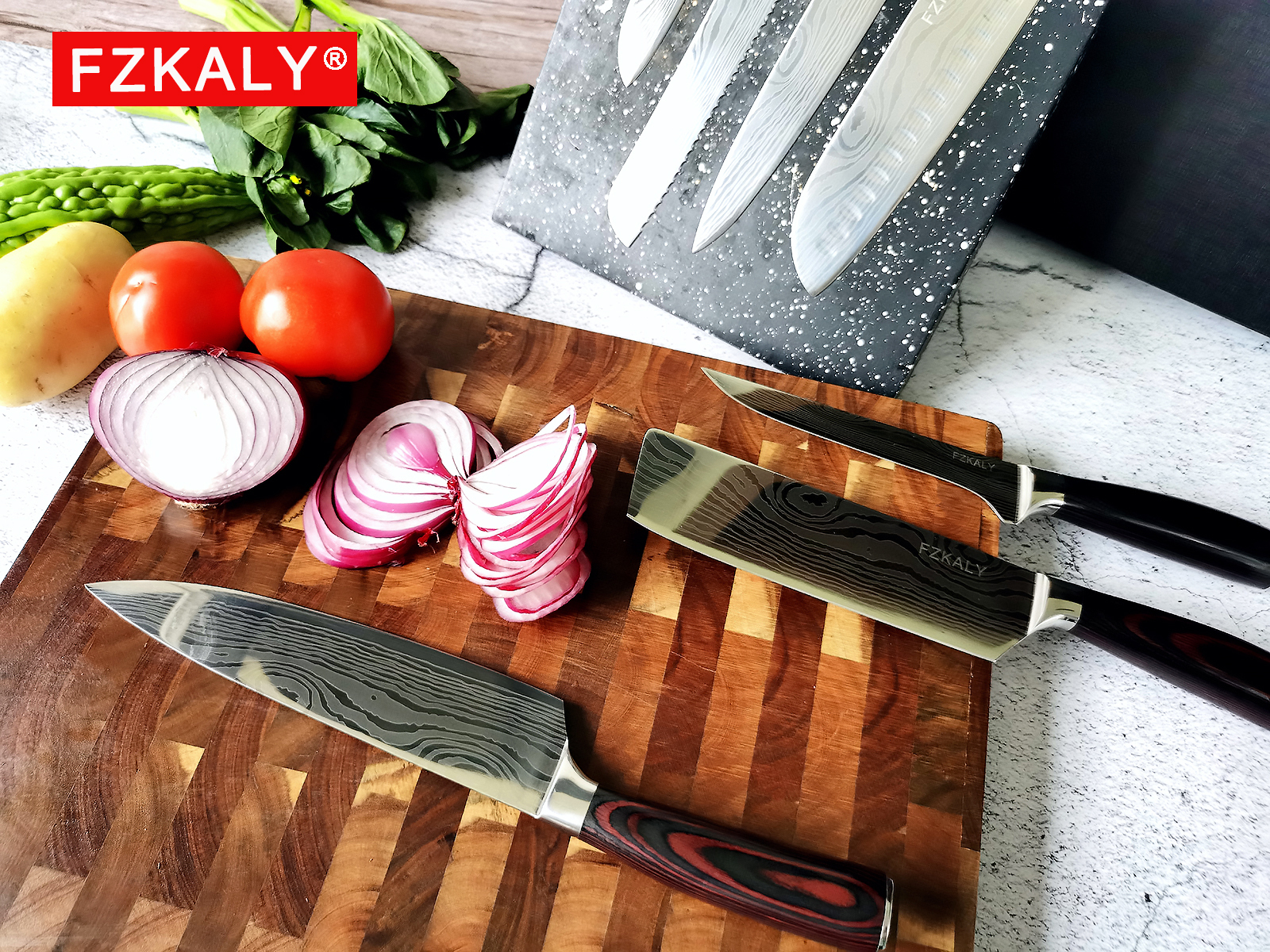
We are here to introduce the different types of kitchen knives and their functions.
A quick review of different types of kitchen knives and their uses
Chef knife: A chef's knife is perfect for chopping and dicing vegetables, fruit, and herbs. As well as handling meat and fish. Due to it having a large blade, it is less good at handling precise tasks like peeling small produce or carving cooked meat.
Santoku knife: Santoku is also an all-rounder kitchen knife and does well in chopping, dicing, and mincing. However, it is less suited for mincing herbs due to its flat blade.
Meat cleaver: Meat cleavers are mainly used to chop through bones, meanwhile, it is ideal for big hard vegetables like pumpkins and large chunks of meat like ribs.
Nakiri: Nakiri is well suited for cutting vegetables, especially long vegetables like eggplants, cucumber, and root vegetables like carrots.
Bread knife: A bread knife is specially designed for slicing soft or crusty bread without sacrificing its integrity and other baked foods.
Utility knife: A utility knife is usually used for small to midsize vegetables and meats, such as fruit, tender meats, or sandwiches.
Boning knife: A boning knife is used for removing meat from bones. Remember not to cut through bones.
Paring knife: As its name suggests, the paring knife is great for peeling fruits and other delicate tasks.
Steak knife: A steak knife is designed for enjoying steaks, also good for enjoying chicken, and fish.
Types of kitchen knives
1. Chefs Knife
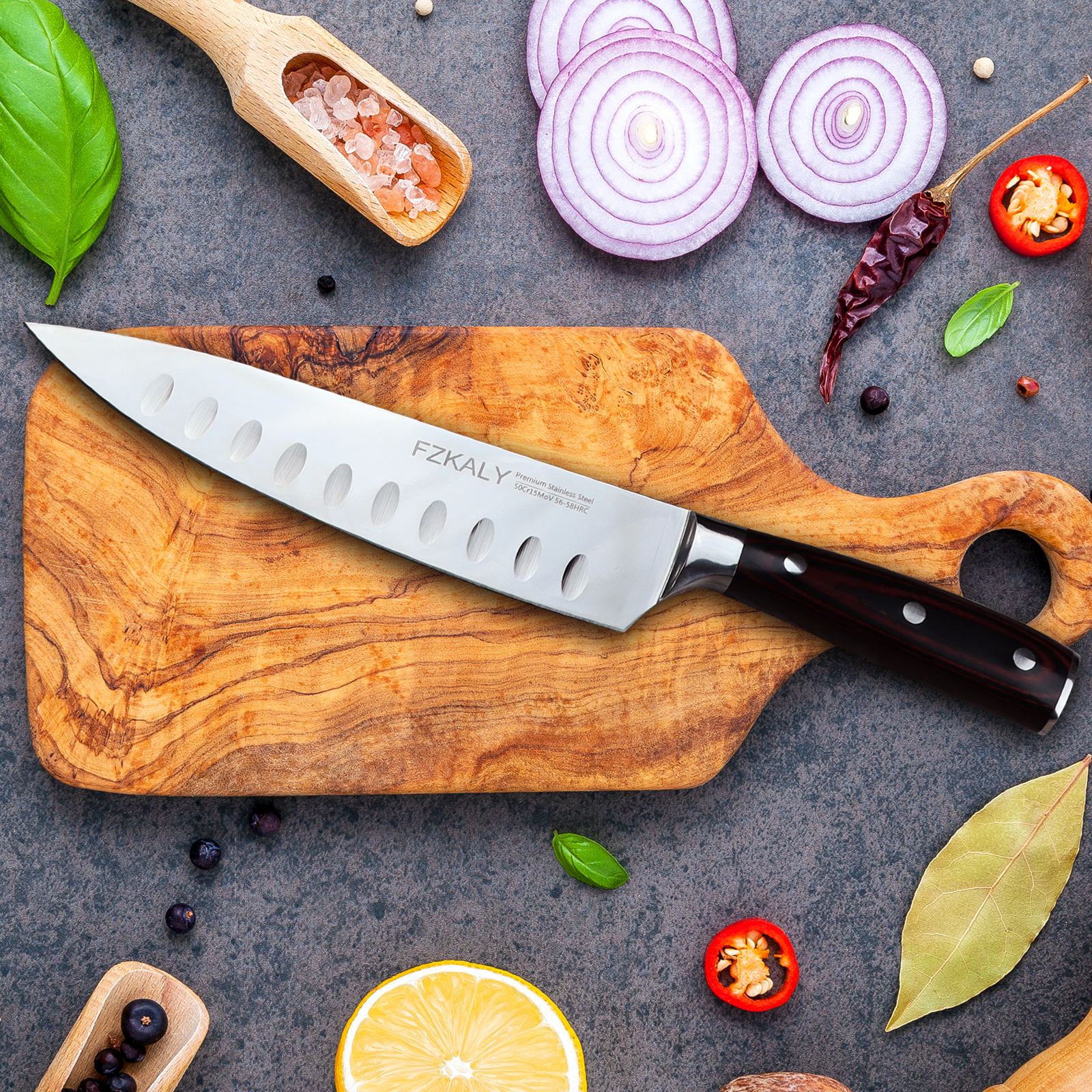
If you just want to have one knife, it must be a chef's knife which is the most frequently used knife in the kitchen.
The size of the chef knife ranges from 8 to 10 inches, however, 8 to 10 inches is the most popular. Which size is great for you depends on how big your hands are.
A chef knife typically has a broad blade tapering upward to a point, the blade rounds at the tip that allows cooks to rock back and forth, making fast mincing possible.
You may want to know what chef's knife should I choose. We tell you the weight and balance of a chef knife is the most important factor you should consider. A good chef knife can offer you a smooth and fast rhythm as you’re quickly slicing, dicing, and julienne. At the same time, a forged full tang chef knife is better than a stamped one, which ensures better stability and durability.
The chef's knife is great for almost every cutting task in the kitchen, from cutting poultry to chopping potatoes.
2. Santoku Knife
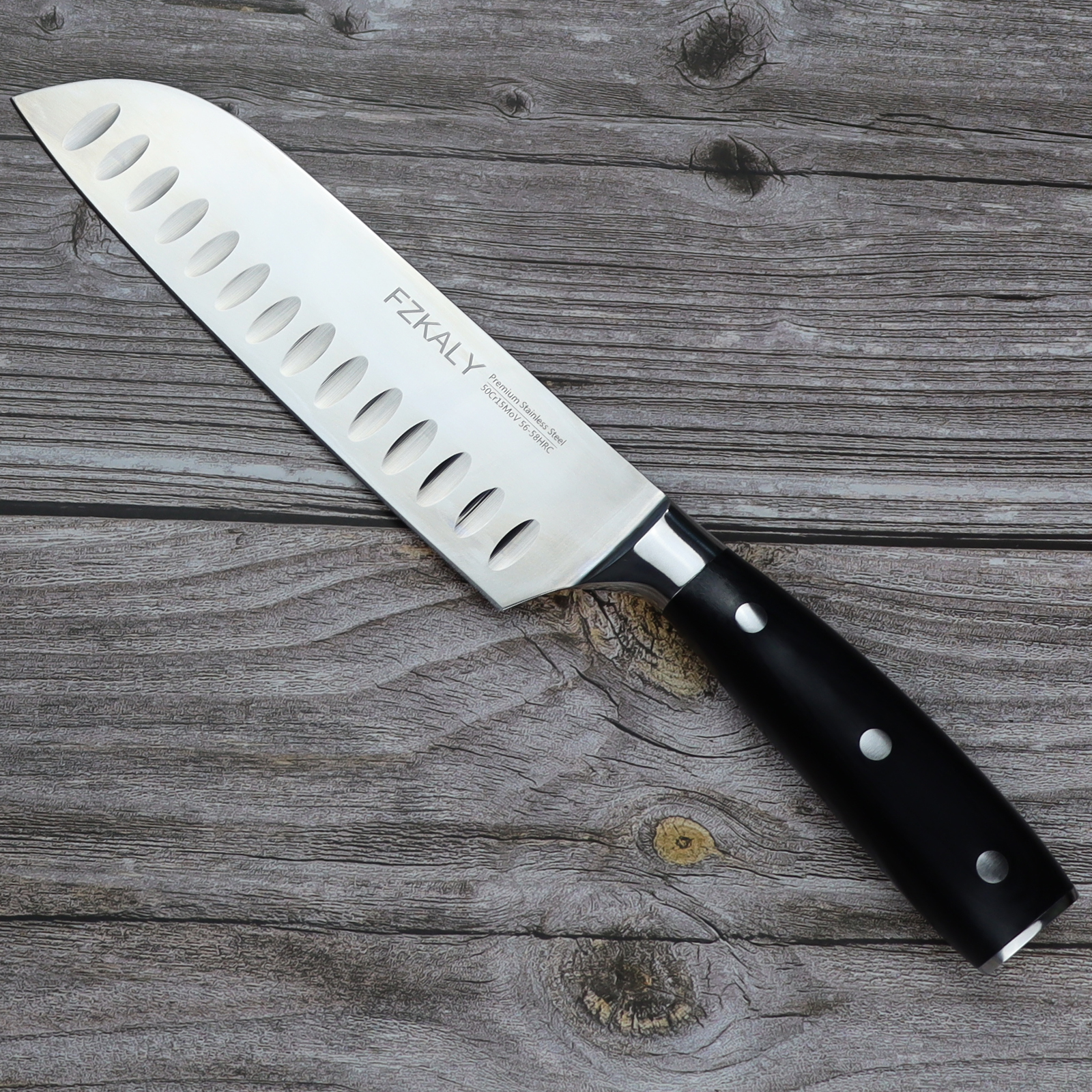
Santoku is a Japanese-style chef knife with a slightly shorter and thinner blade and hollow edge. It is more suited for skinny slices than the chef’s knife. The hollow edge on the blade avoids food sticking and makes foods easier to slide off. Santoku can do almost everything a typical chef’s knife can.
Without a doubt, the santoku knife is some chefs' favorite knife in their knife collection. If you are looking for a smaller, lighter blade. Santoku is more suited for you.
3. Cleaver Knife
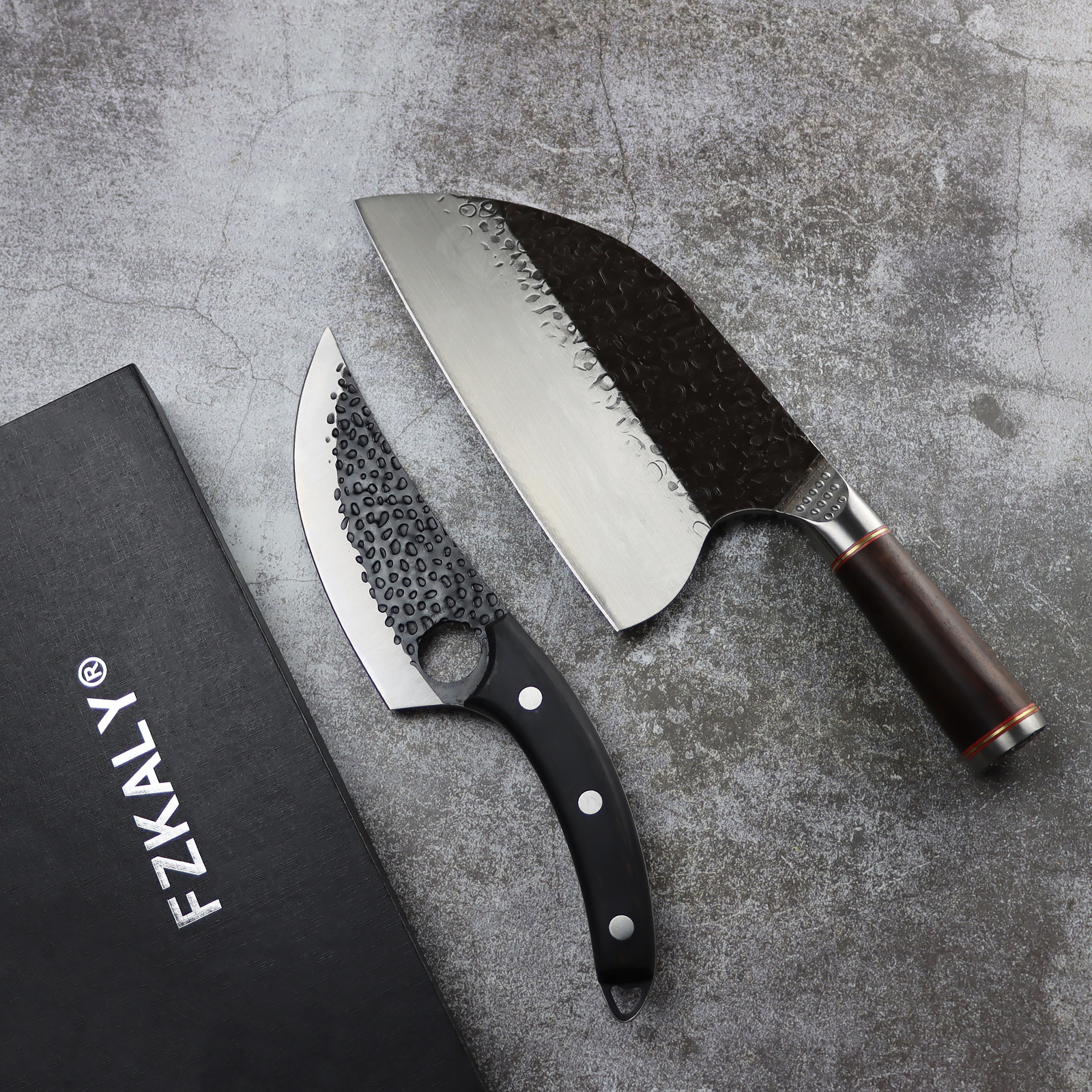
With its rectangular blade with no belly and thick spine, a cleaver is heavy enough to cut through bones, meat, and hard and thick ingredients, such as pumpkin, gourds, ribs, and cabbage heads. To be honest, if you don't scared about the bulkiest and heaviest cleavers, it could be an all-rounder kitchen knife for any kitchen task.
4. Nakiri
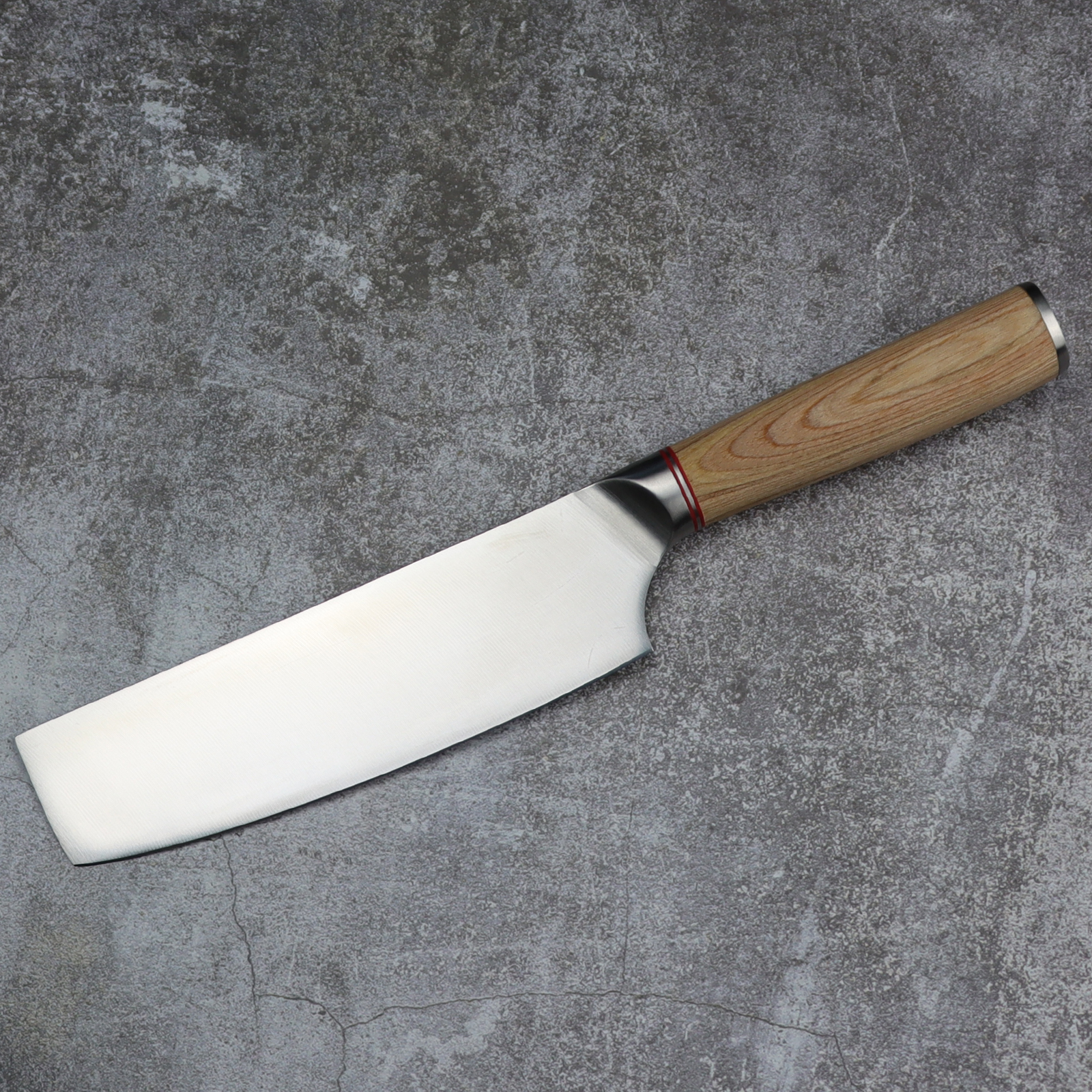
With its long and thin blade and squared-off tips, Naikiri is designed for chopping veggies. If you want to get thin slices, Naikiri is very useful. What's more, you don't need to worry about getting jammed in hard veggies. Nakiri is ideal for fast speeding cutting.
5. Bread Knife
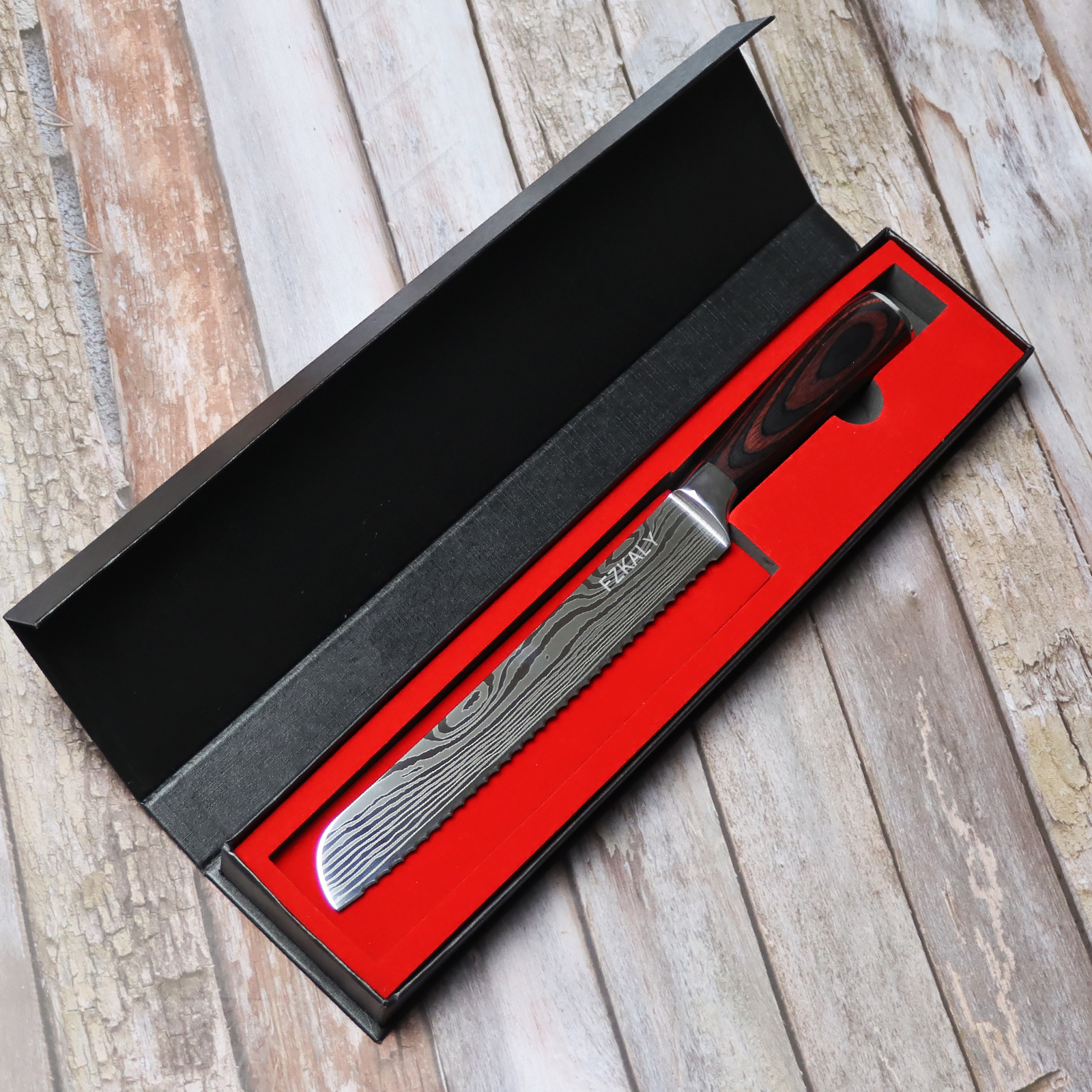
A bread knife typically has a long blade and serrated edges. Its serrated edge is ideal when you want to slice something without applying pressure. It won't ruin the crumb structure or tear the loaf apart. The long handle and thick blade of a bread knife offer excellent grip and stability make it also great for large melons, tomatoes, and oranges.
6. Utility Knife
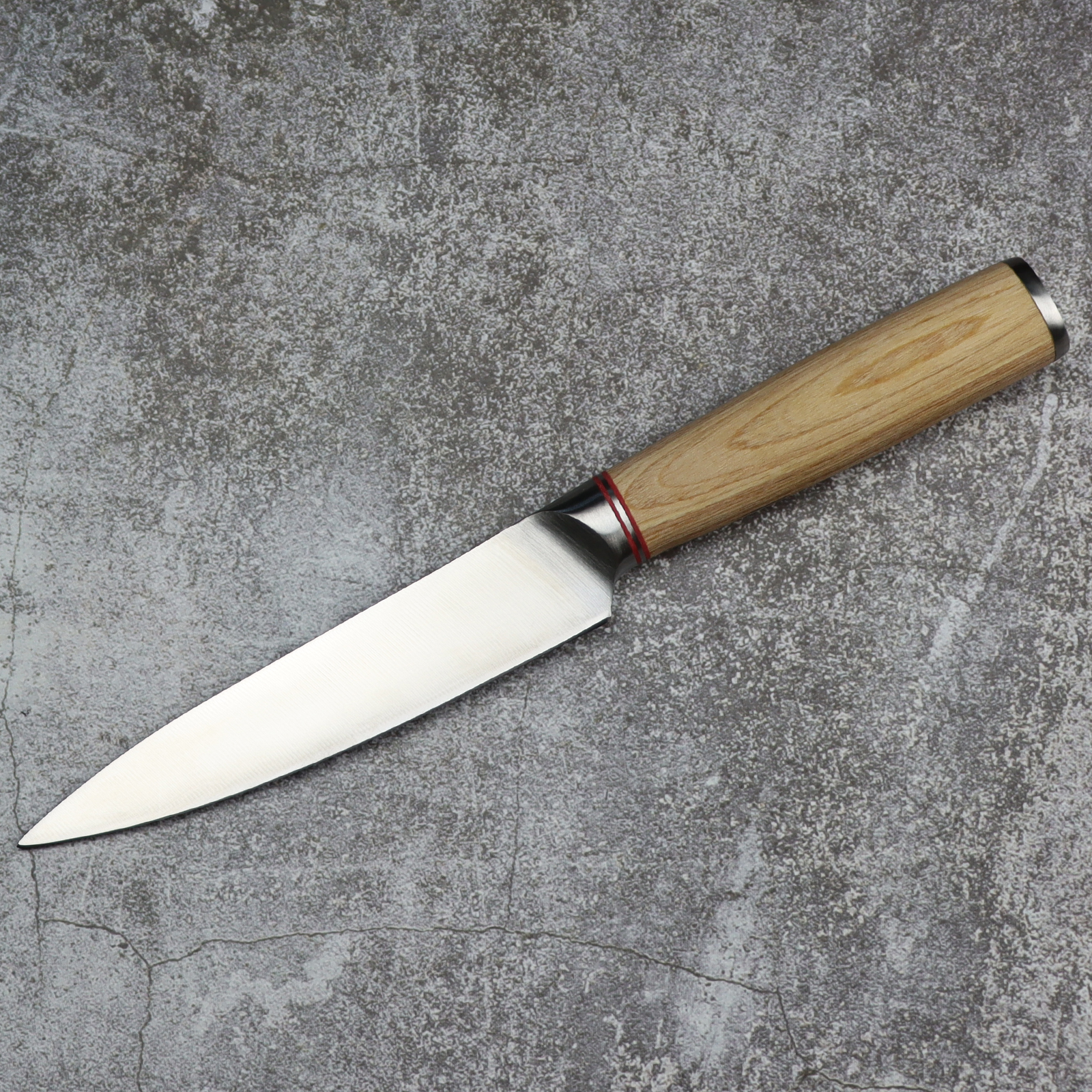
As the name implies, the utility knife is useful for the everyday chef. It features a narrow blade and small tip which is better for thinner slicing, trimming, and filleting. It combines the weight of a chef’s knife and a bit of the precision of a paring knife. It usually has 4 to 6 inches long.
7. Boning Knife

Boning knives are typically about 3 to 8 inches in length, 6 inch boning knife is loved by most people.
The boning knife features a long, thin, narrow, and flexible blade that tapers to a pointed tip. Its thinness allows you to move with the curves and bends of the bone and extract as much meat as possible, resulting in less waste in the process. The pointed tip can cut through those tough connective tissues and joints that other knives struggle with. So, it is great for removing the skin from fish and peeling or trimming veggies.
8. Paring Knife
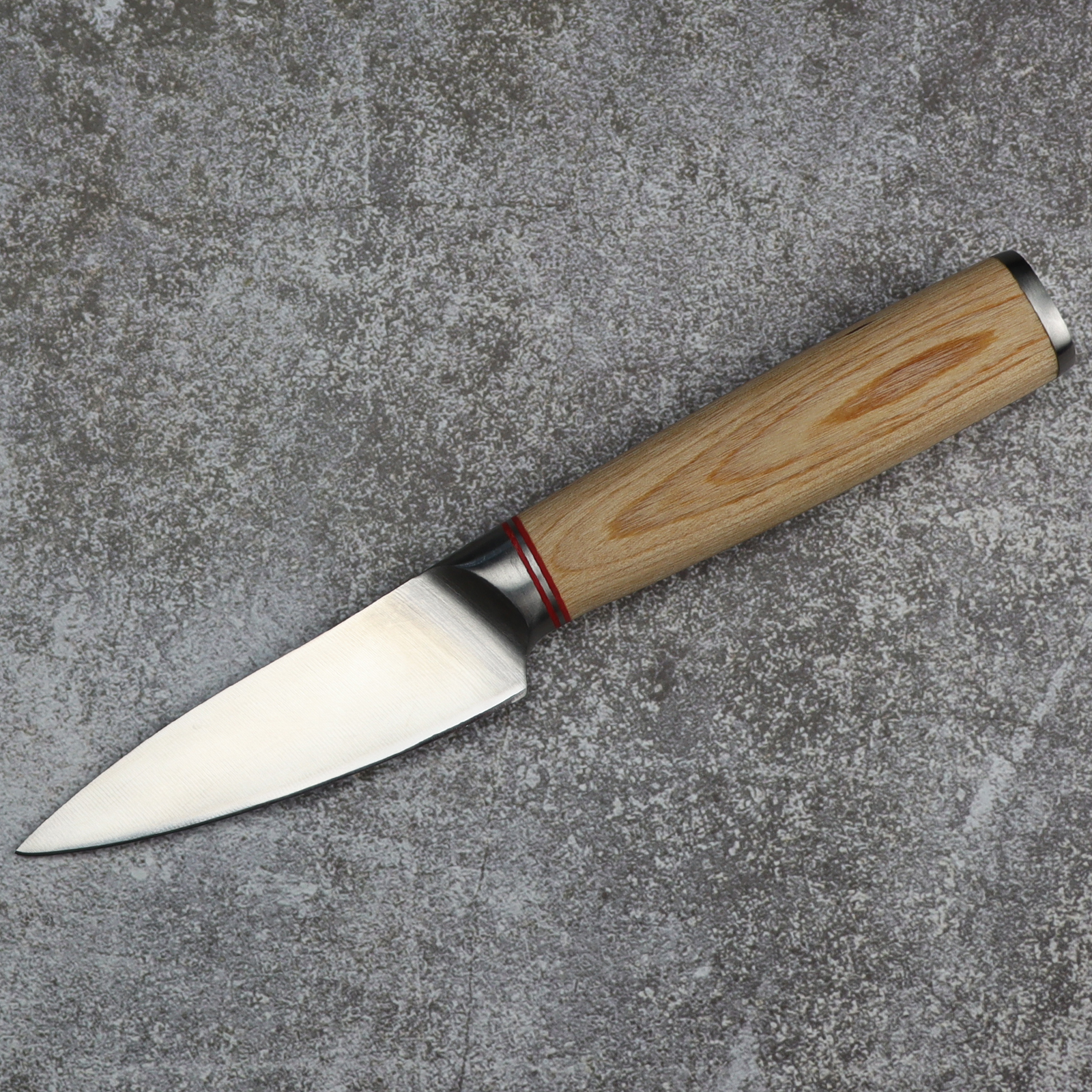
Actually, a paring knife is like a mini chef’s knife, versatile for precision tasks. A paring knife typically has a thin 3 - 4 inch blade with a pointed tip. According to the shape of the tip, the paring knife is further subdivided into the spear point, sheep’s foot, and bird’s beak.
A paring knife is perfect for handling any fruits. In addition, it is also great for cutting small or tender veggies, like peeling potatoes, shallots, mincing ginger, garlic, onions, and coring tomatoes.
The pointed tip and thin blade make it great for removing seeds and excess fat. What's more, if you like to dress your food and drinks, a paring knife is your good partner.
9. Steak Knife
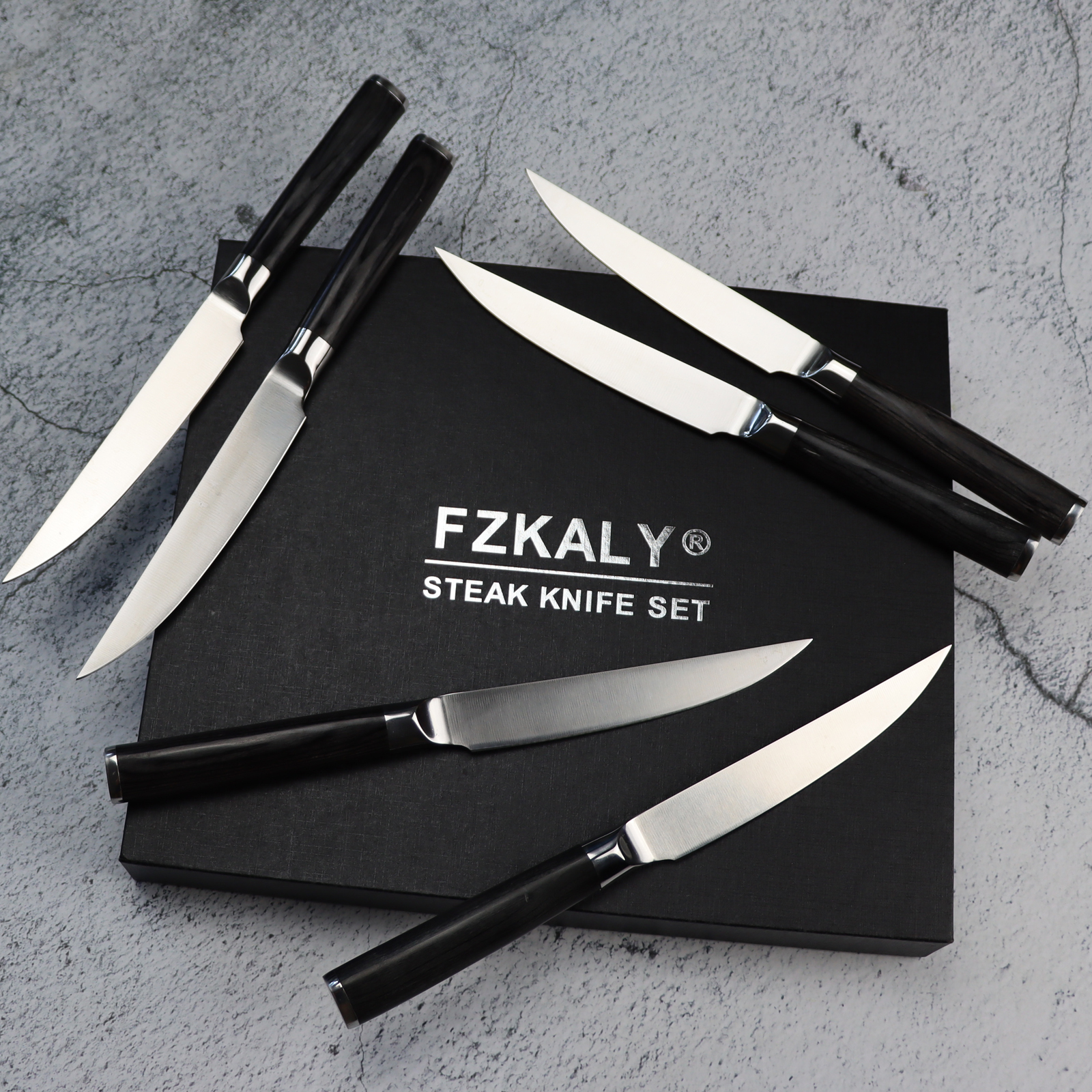
Steak knives aren't a necessity, but it's the icing on the cake.
You don't want your blunt steak knives to ruin dinner, right? Want to cut like butter through your meats, you need a steak knife set. Usually, there are two types of steak knives, straight-edged and serrated steak knives. Own it, you can enjoy steak or pork chop and other cooked food with ease. Of course, it also can be used for handling other tasks like cutting lemons, slicing sandwiches,
Conclusion
There are various types of kitchen knives in the market, find some depending on your cutting needs and preferred cutting style. I believe you can slice with power and your cooking skills will move to the next level.


